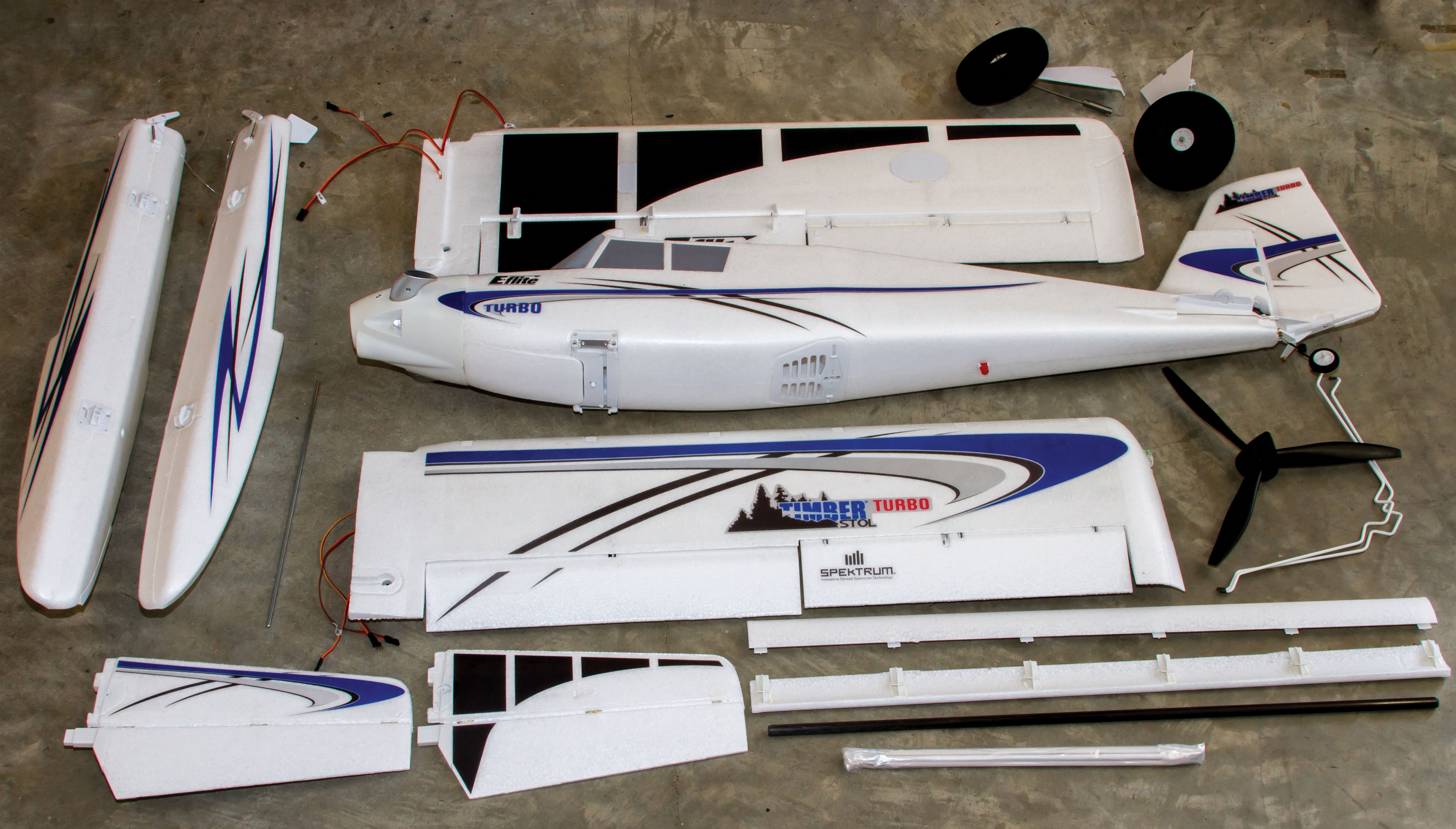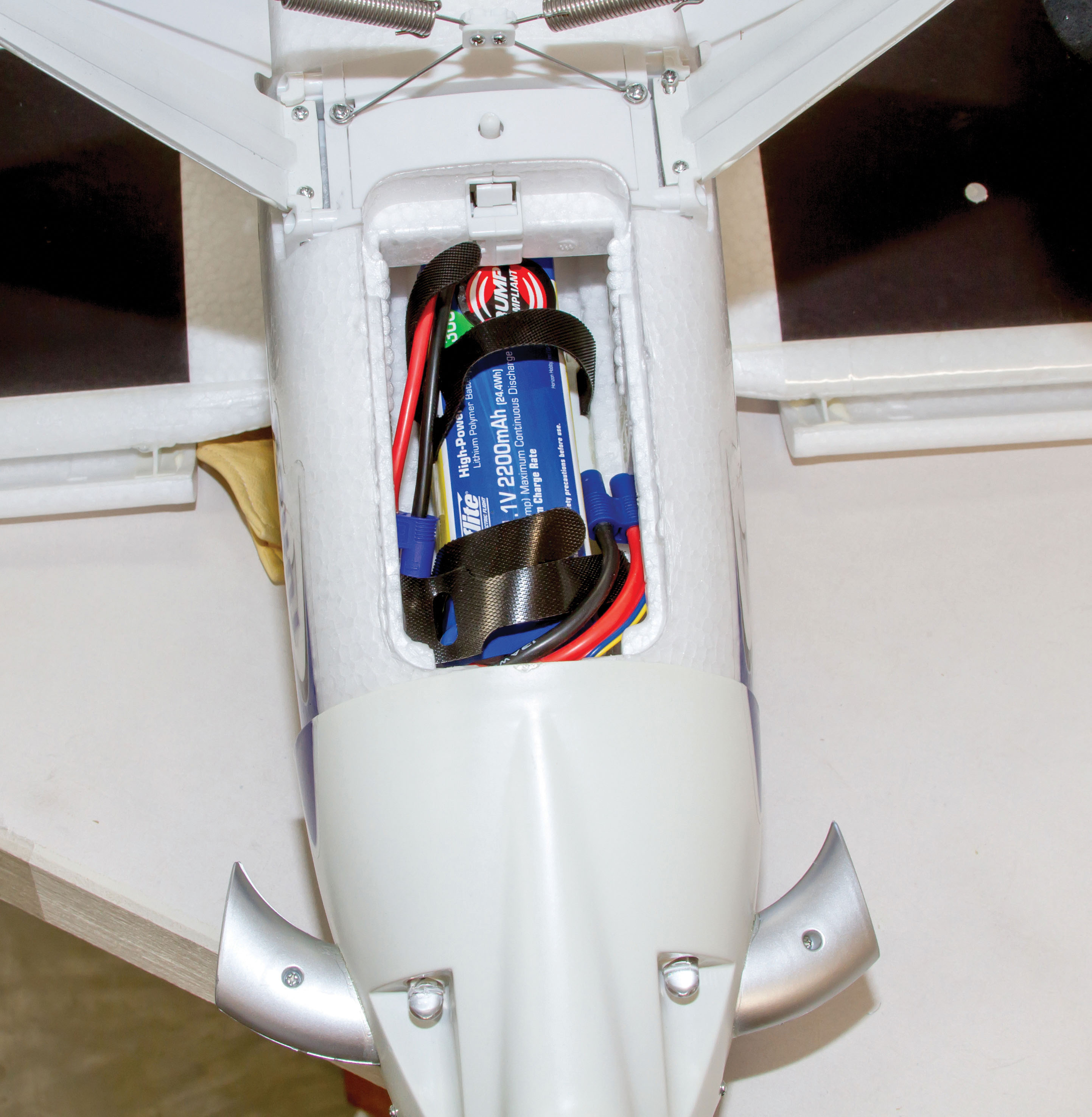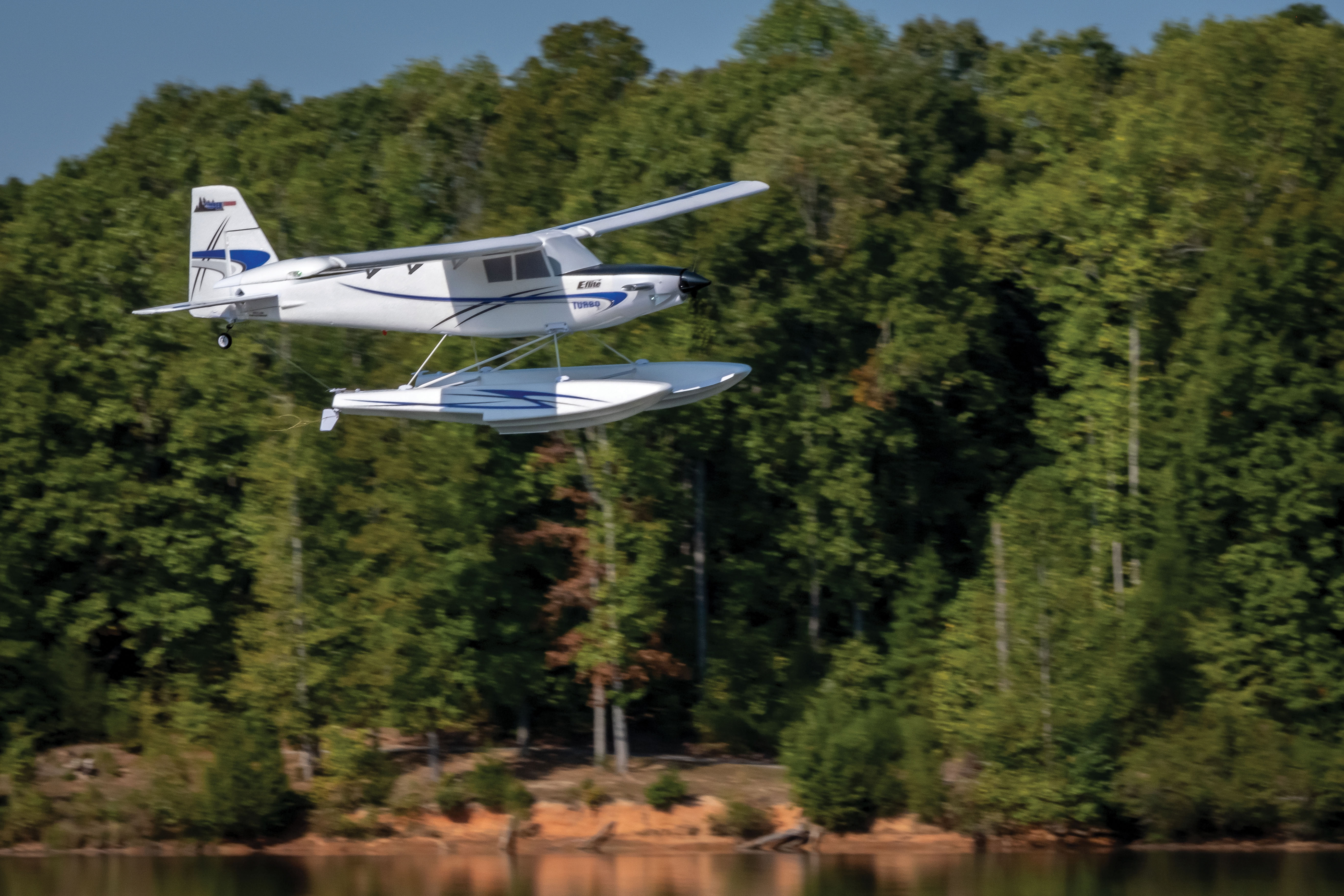Written by Greg Gimlick
Horizon Hobby E-flite Turbo Timber 1.5m BNF Basic with AS3X and SAFE Select
As seen in the February 2020 issue of Model Aviation.
Bonus Video
Assembly
Begin by thoroughly reading the manual then check online to see if there have been any corrections or addendums. There weren’t any, and the only errors in the manual that I found were the airplane’s dimensions. No biggie. The control throws and center of gravity (CG) were correct. E-flite makes radio programming as simple as possible. Even if you get the receiver-ready version, the programming chart offers enough information to make programming a different radio easy. I used my Spektrum iX12 and copied the settings from the manual. The spring-loaded landing gear is the first assembly step and it flexes at the base on hinged assemblies. With big tires and live gear, the aircraft is custom-made for STOL operations.Image

Image

Slats or Not?
The included LE slats are optional. After deciding to install them, you’ll have to live with them because there is no provision to make them removable. I bought this aircraft for its Short Takeoff & Landing (STOL) capabilities, and having used the slats on my original Timber, I knew I’d use them on the Turbo version. Be sure to pay attention to the marking on each one for left- and right-wing panels. The roll rate will be slightly reduced, but the inverted capabilities will suffer most. You can do outside maneuvers and inverted flight, but you’ll have to be more aggressive with the elevator and be patient. Installing the slats allows slower-speed flight and increases aileron authority at those speeds. You can also carry a higher angle of attack before it stalls. It’s definitely worth installing them.Floats
If you haven’t flown off of water, you’re in for a real treat. A huge plus is how easy the floats are to install and remove. A few screws, a couple of pull-pull connectors, and you’re done! Unlike some models, this one can leave the field and head to the lake in minutes.Control Throws and CG
I set the CG at the recommended 60 mm and adjusted the battery’s position to achieve that. Be sure to measure the distance from the wing’s LE and not the front of the LE slats. The floats shifted the CG slightly aft. My control throws were set at the recommended settings and I’ve left them there. No exponential was programmed as instructed by the AS3X system manual.SAFE Select or AS3X Only
I love AS3X. The Turbo Timber also offers SAFE Select, a self-leveling system that allows a pilot to center the sticks and the receiver will level the airplane. This is a great option for beginners. The real beauty of the Turbo Timber’s system is that it allows you to bind it so that SAFE Select is active, then assign a switch to turn it on or off. If you don’t want to use SAFE Select, simply bind it in the usual fashion and you’ll have AS3X only.Image

Image

Image

Flying
I couldn’t wait to take the Turbo Timber to the field then to the lake. The STOL capability of this airplane is just incredible! I loved the way the original did STOL operations, and the new version takes it up a notch—especially when I used the 4S setup. I did the test flight with SAFE Select active to see how well it worked and it was every bit as effective as it was on the original. Next, I flipped the switch to disable SAFE and it was as though an old friend had returned but with more power. The AS3X works in the background so it doesn’t ever feel as though you’re fighting a stabilizer. It dampens out some of the turbulence, but not enough to reduce the feel of the airplane. Slowing down for a landing with full flaps is a thing of beauty! Takeoffs are equally quick using flaps. With flaps deployed and a blip of throttle, the Turbo Timber is headed skyward in an instant. In fact, you better be ready because it’s going to go straight up! The more I experimented with stalls and slow flight, the more impressed I became. I’m not sure I can even call them stalls because they just sort of mush along and never drop a wing. With the LE flaps installed, full-on aerobatics become more challenging. The elevator feels "heavy" during inverted flight and outside loops require much more altitude, but the capability is there. Doing aerobatics with this airplane is different, but it was designed for STOL. With that noted, it will hover with a 4S battery and do respectable loops and rolls using wheels or floats. Flying off of water is a breeze. This airplane is as good as it gets if you’re looking for a first floatplane to learn water operations. Using SAFE Select, beginners could easily teach themselves float-flying knowing that the airplane will compensate for some mistakes when rising from the water. The pull-pull water rudders work like champs and are practically the easiest I’ve seen to set up. This model is a joy to do touch-and-gos off of water!Conclusion
I bought the Horizon Hobby E-flite Turbo Timber because I wanted a STOL aircraft and it filled the bill perfectly. I guess I knew it would because I loved my original version. The fun of this airplane is seeing how quickly I can get it off of the ground and how little rollout I get upon landing. It’s aerobatic when wanted and a beginner’s trainer when needed. The ability to switch back and forth between the 3S and 4S power setups without making any other changes is nice! The three-blade propeller looks great and pulls the model through the air with authority.Image








Comments
Add new comment